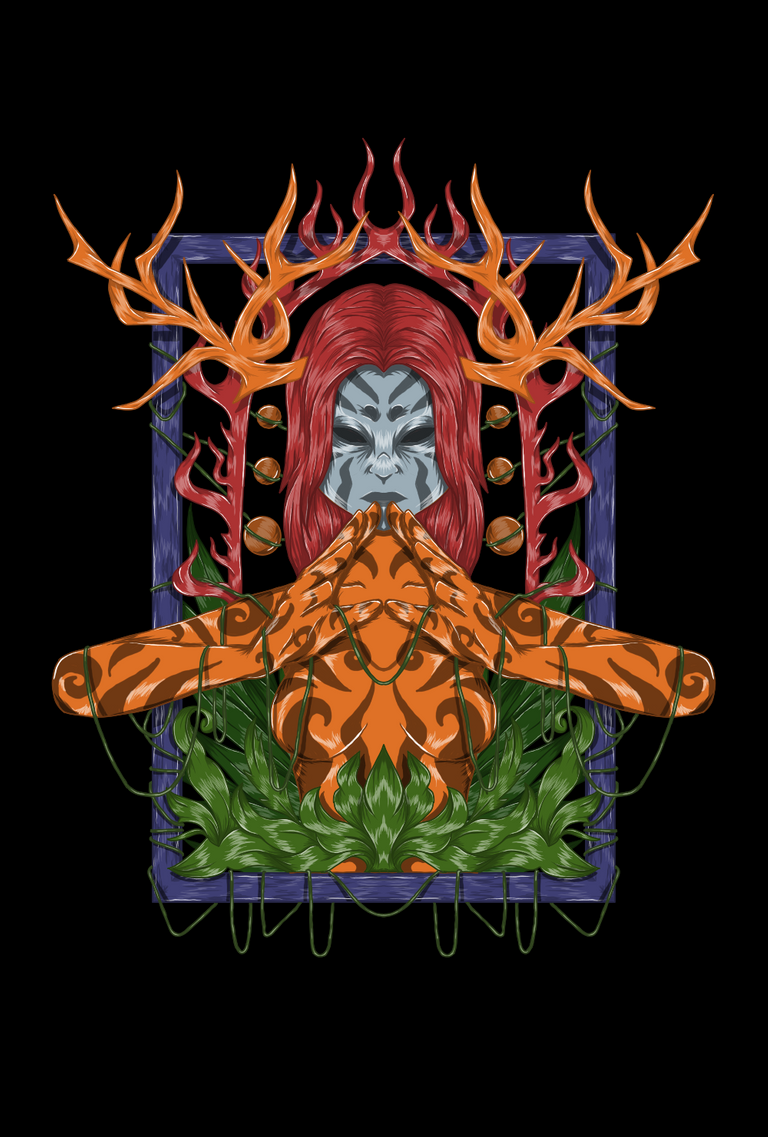
Jantaka Jalma is taken from a Sanskrit word which means incarnate (jantaka) and human (jalma). Jantaka Jalma is intended to describe the existence of an entity that seems to have transformed into a human because of how close that entity is to human life. The entity in question is desire, and is described in the work which has the following explanation;
In this work, desire is depicted as a woman. Women are chosen because they are considered to have a soft nature but are very strong and difficult to shake. The orange color, which is the body color of a woman's figure, was chosen to illustrate the warmth that is enough to make life work. While the whitish color which is the color of the face of a woman's figure represents an impartial neutral nature. Overall, the female figure in this work wants to illustrate the existence of a desire that can be the fuel for the continuation of human life regardless of who the person is and what their background is.
A bunch of fire that surrounds the head of a woman's figure becomes a depiction of a living desire and is intended to illustrate that desire is not a dead or passive thing but a living and active thing.
The green plant at the bottom is to illustrate that desire is not something that comes from outside but something that comes from within.
While the horns and circles that are brownish orange serve as decorations for the work.
In this work, desire is not described as a bad thing, but as something that fuels life so that it is not empty and dies.